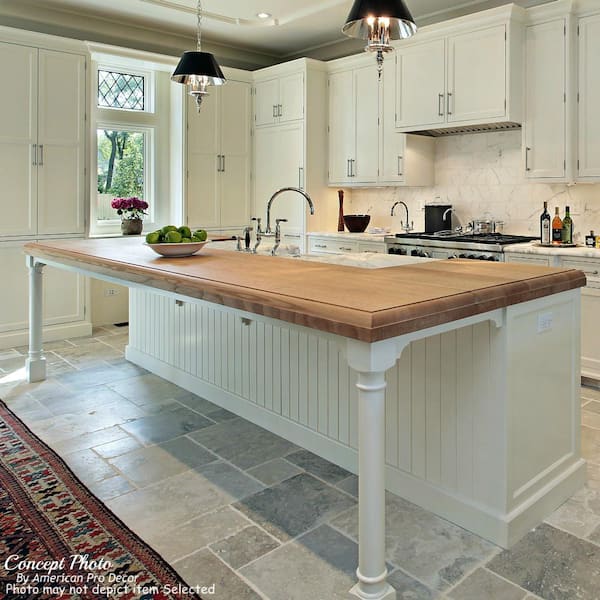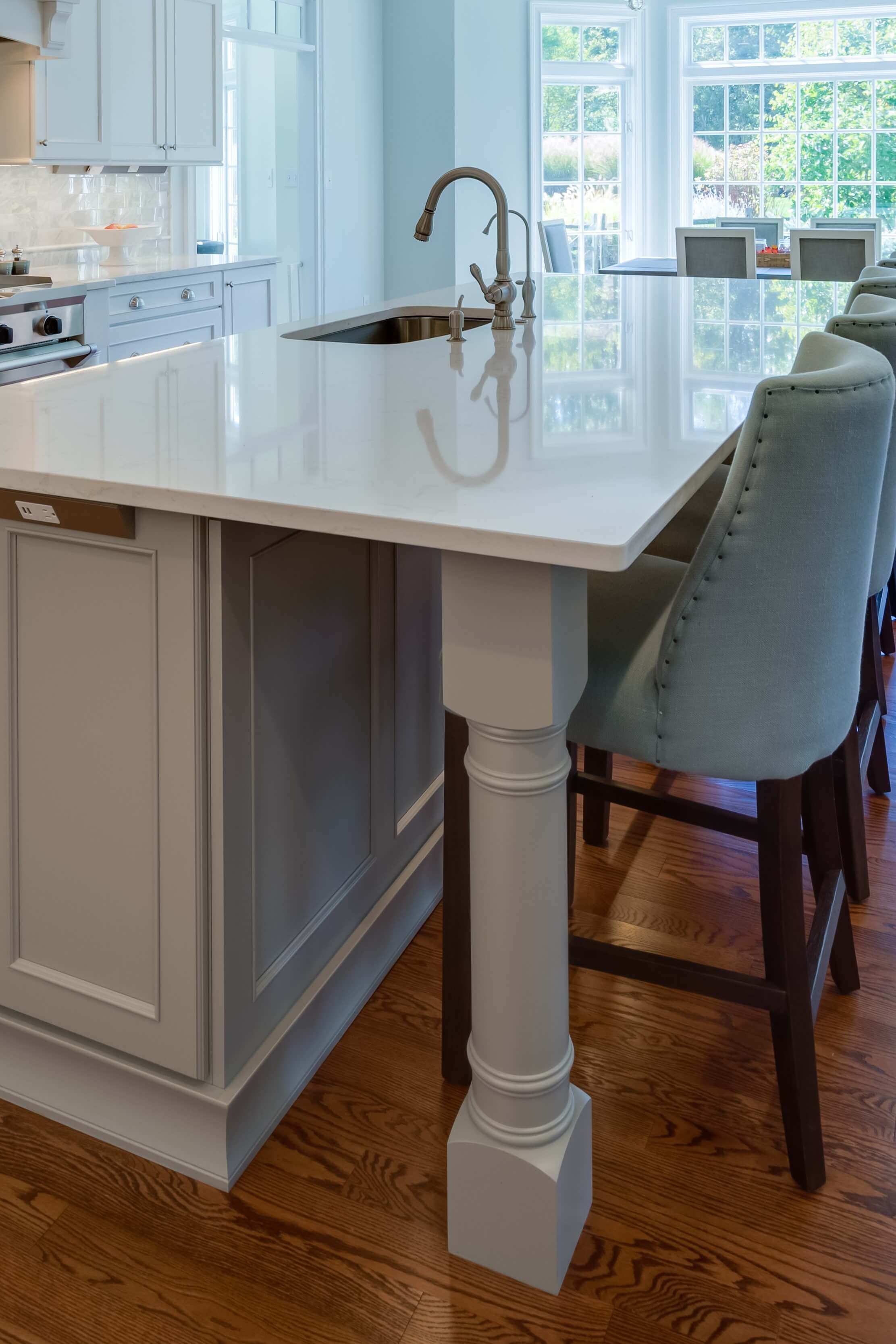A Comprehensive Overview to Choosing the Right Kitchen Island Leg
A Comprehensive Overview to Choosing the Right Kitchen Island Leg
Blog Article
Checking Out the Vital Features of a Cooking Area Island Leg for Your Culinary Room
The kitchen area island acts as a main center in any type of culinary space, and the selection of leg style is pivotal in boosting both its performance and visual allure. Comprehending the important attributes of kitchen area island legs-- consisting of product choices, design styles, and stability aspects-- can substantially affect the overall experience within the cooking area. As we discover these aspects, we will certainly discover how thoughtful modification and accessories can raise your kitchen island from a simple energy to a striking centerpiece. What certain factors to consider should be prioritized to accomplish this equilibrium?
Relevance of Kitchen Island Legs
Kitchen island legs play a critical role in both the performance and aesthetic appeals of a cooking area room. They not only support the weight of the island however likewise boost the total layout, contributing to the kitchen's visual appeal. The option of legs can dictate the style of the kitchen area, be it contemporary, typical, or rustic.
Functionally, durable and properly developed legs guarantee security, enabling the secure use the island for numerous jobs such as cooking, eating, or enjoyable. Strong legs stop moving and wobbling, offering a dependable surface for everyday activities.
Moreover, the elevation and positioning of the legs can affect the convenience degree for those seated at the island. A well-considered height can fit bar feceses or chairs, promoting a welcoming atmosphere for events.
Along with these useful considerations, kitchen area island legs can act as a prime focus in the area (kitchen island leg). Attractive or uniquely designed legs can elevate the design aesthetic, making the island a focal point. Hence, choosing the best kitchen island legs is essential for stabilizing type and function in any cooking space
Product Options for Legs
Choosing the appropriate product for kitchen area island legs significantly influences both resilience and layout. Typical material options consist of timber, metal, and rock, each offering unique benefits.
Wood is a popular selection due to its heat and flexibility. It can be conveniently tailored to match numerous decor styles, from rustic to modern. Hardwoods like oak and maple give exceptional strength and long life, while softer woods can be a lot more vulnerable to put on and tear.
Steel legs are favored for their streamlined, modern visual. kitchen island leg. Stainless-steel and aluminum are not just robust however also resistant to corrosion and corrosion, making them excellent for kitchen area settings. They can create a commercial look and are frequently readily available in various surfaces to match various other kitchen aspects
Rock legs, such as granite or marble, include a component of high-end and security. While heavier than other materials, they use extraordinary resilience and can stand up to substantial weight. However, they may call for extra assistance to make certain correct balance.
Ultimately, the selection of material should line up with both functional needs and the general layout vision of the kitchen area space, making certain that the island legs improve both energy and aesthetics.
Layout Styles to Take Into Consideration
What design styles should be taken into consideration when choosing legs for a cooking area island? The choice of leg design considerably affects the overall visual of your cooking area. For a contemporary cooking area, sleek and minimalistic leg layouts, such navigate to this site as stainless steel or geometric forms, can enhance the contemporary allure, offering a tidy and uncluttered appearance.
In comparison, traditional kitchen areas gain from classic designs such as turned or carved wood legs, which add heat and character. These alternatives frequently feature elaborate information that enhance classic furnishings. For a rustic atmosphere, consider legs made from reclaimed wood or functioned iron, which bring a natural, earthy quality to the room.
If you lean towards a commercial motif, durable metal legs with a distressed surface might be perfect, supplying an edgy yet innovative touch. In addition, farmhouse design kitchens can incorporate chunky legs that evoke a sense of strength and my company homeliness.

Elevation and Security Elements
The elevation and security of a kitchen area island are essential aspects that straight impact its performance and customer experience. A suitable kitchen area island leg need to give sufficient height to accommodate a variety of jobs, from food prep work to laid-back dining. Generally, kitchen islands stand between 36 to 42 inches high, straightening with standard counter and bar heights. This variety makes sure convenience for customers while performing various activities, thus improving the general functionality of the area.
Security is similarly important, specifically as kitchen islands frequently offer as focal factors in culinary settings. The leg's accessory to the island's base must be safe and secure, making sure more tips here longevity and durability versus the wear and tear of everyday usage.
Personalization and Accessories
Personalization options and devices for kitchen island legs can substantially enhance both the visual appeal and capability of the space. Homeowners can pick from a selection of materials, consisting of stone, timber, and steel, enabling smooth integration with existing kitchen area decor. The option of coating-- be it a natural discolor, repaint, or powder finish-- further customizes the appearance, guaranteeing that the island matches the overall design style.
Along with material and surface, home owners may additionally explore the consolidation of devices such as decorative brackets, adjustable feet, or integrated shelving. Braces can supply additional support while contributing to a modern-day or rustic visual. Flexible feet are specifically advantageous for unequal flooring, making sure the island continues to be secure and degree, which is essential for both security and functionality.

Final Thought
To conclude, kitchen island legs serve a crucial function in giving security and enhancing the general visual of the culinary room. The selection of materials and style styles adds to both capability and visual appeal, while considerations of height and stability make certain practical use. Moreover, customization choices and devices can elevate the kitchen area island, making it a distinct prime focus within the home. Thus, careful consideration of these features is vital for an efficient cooking area design.
The cooking area island offers as a main center in any type of culinary area, and the option of leg style is critical in enhancing both its functionality and visual appeal. Recognizing the essential features of cooking area island legs-- consisting of material options, style styles, and stability aspects-- can considerably affect the general experience within the kitchen area.Cooking area island legs play an essential duty in both the functionality and visual appeals of a kitchen area space.What layout styles should be thought about when choosing legs for a kitchen island?In verdict, kitchen island legs offer a critical duty in offering security and enhancing the total aesthetic of the cooking space.
Report this page